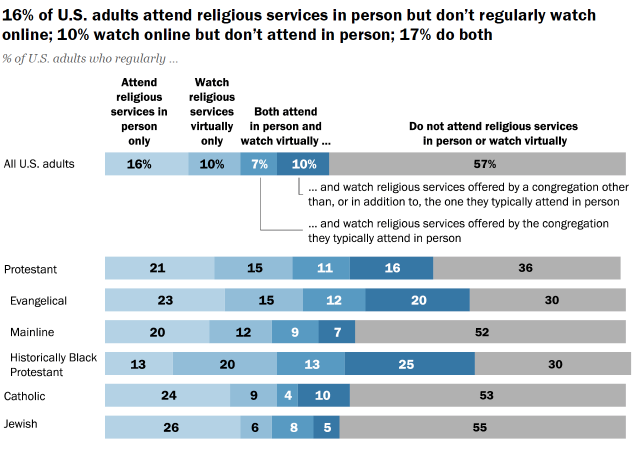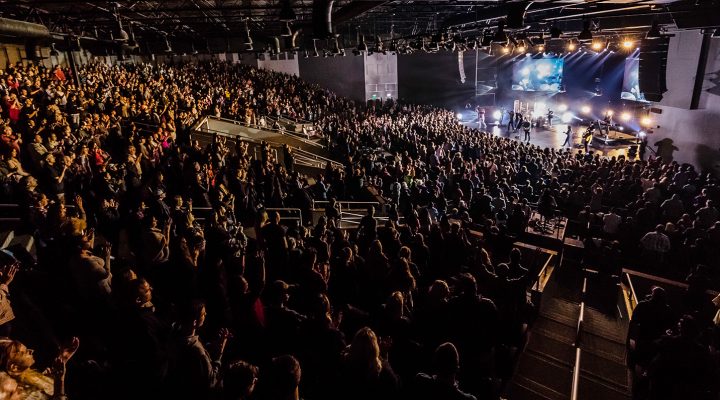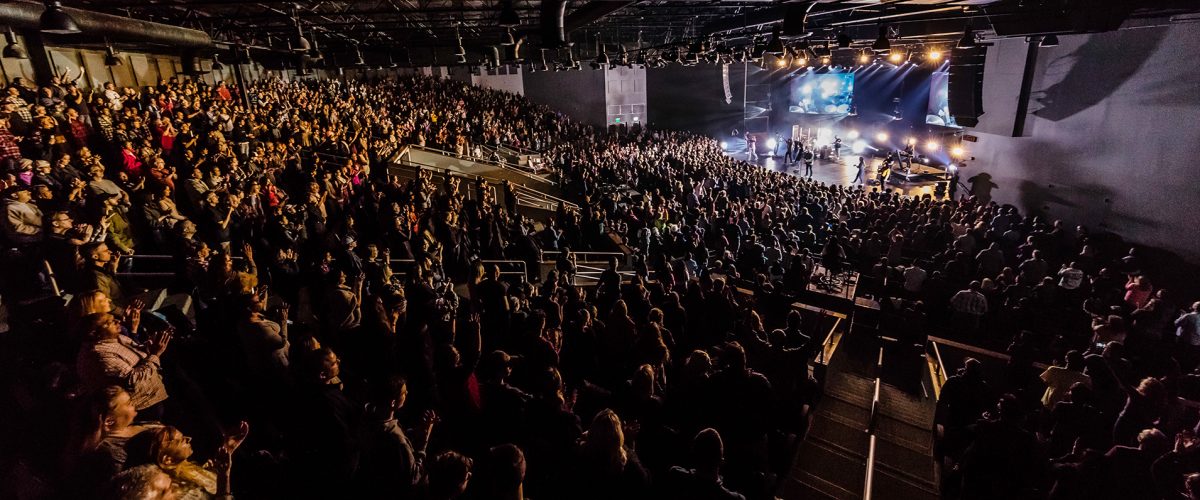While church attendance in America has declined slightly over the course of the COVID-19 pandemic, how people attend religious services appears to have stabilized, according to Pew Research Center.
“As the coronavirus pandemic winds down, about a quarter of Americans (27%) are still watching religious services on screens. This includes 10% who take part virtually but do not regularly attend in person, plus 17% who watch online or on TV and attend in person on a regular basis,” Pew said.
And as to which mode of participation is preferred, “those who do both — who watch services on screens and attend in person — overwhelmingly say they prefer going in person, by a margin of 76% to 11%.”
However, among those who prefer virtual to in-person worship, fear of catching an illness no longer is a primary motivator. Convenience is.

The Pew study also found how solitary the virtual worship experience is for some participants. “About half (51%) of those who regularly watch religious services online or on TV say they generally watch these services alone. A quarter say they watch with other people, while another 23% say ‘it depends.’”
Adults who view services on screens also reported being likely to sing or pray aloud and kneel during online worship.
Most viewers (60%) said they watch the services of just one congregation while 32% said they view programming from two or three houses of worship. About 5% attend the virtual services of four or more institutions.
“As for which congregations they watch, 26% of regular viewers say they exclusively watch services offered by the house of worship they generally attend. About one in five (18%) typically watch services offered by a different house of worship, while a similar share (20%) watch services of their own congregation and of other congregations. An additional 36% of regular viewers do not regularly attend religious services in person.”
 Survey results also varied by denominational affiliation, with members of Black groups leading the way in terms of virtual attendance, Pew said.
Survey results also varied by denominational affiliation, with members of Black groups leading the way in terms of virtual attendance, Pew said.
“For example, about six in 10 adults in historically Black Protestant denominations (58%) say they generally watch religious services on screens at least monthly or watched them in the month prior to the survey. This compares with 47% of evangelicals, 28% of mainline Protestants, 24% of Catholics and 19% of Jews.”
Pew found a similar pattern when looking at individuals, regardless of denominational affiliation: 48% of Black adults say they watch religious services online or on TV at least monthly, more than twice the share of white adults (22%) and higher than the share of Hispanic adults (30%) who regularly watch religious services online.
Nationwide, 67% of those who participate in religious services online say they are “extremely or very satisfied” with those options. Another 68% are highly satisfied with virtual sermons and 54% felt the same about music in virtual religious gatherings.
Yet Americans give higher marks to worshipping together in person, the survey found. “While majorities express satisfaction with virtual services, even bigger shares of physical attenders say they feel extremely or very satisfied with the sermons (74%) and music (69%) at the services they attend in person.”
Those who attend in-person gatherings (65%) also reported stronger feelings of connection with fellow churchgoers than virtual worshipers (28%).
More virtual churchgoers (32%) say they feel they are watching “without truly being an active participant” than those (25%) who feel they are “active participants.”
Despite all these options, the majority of Americans (57%) do not typically attend religious services at all.
Related articles:
Are Americans attending church more or less than before the pandemic? It’s complicated
Less than half of Americans now claim a formal congregational membership


